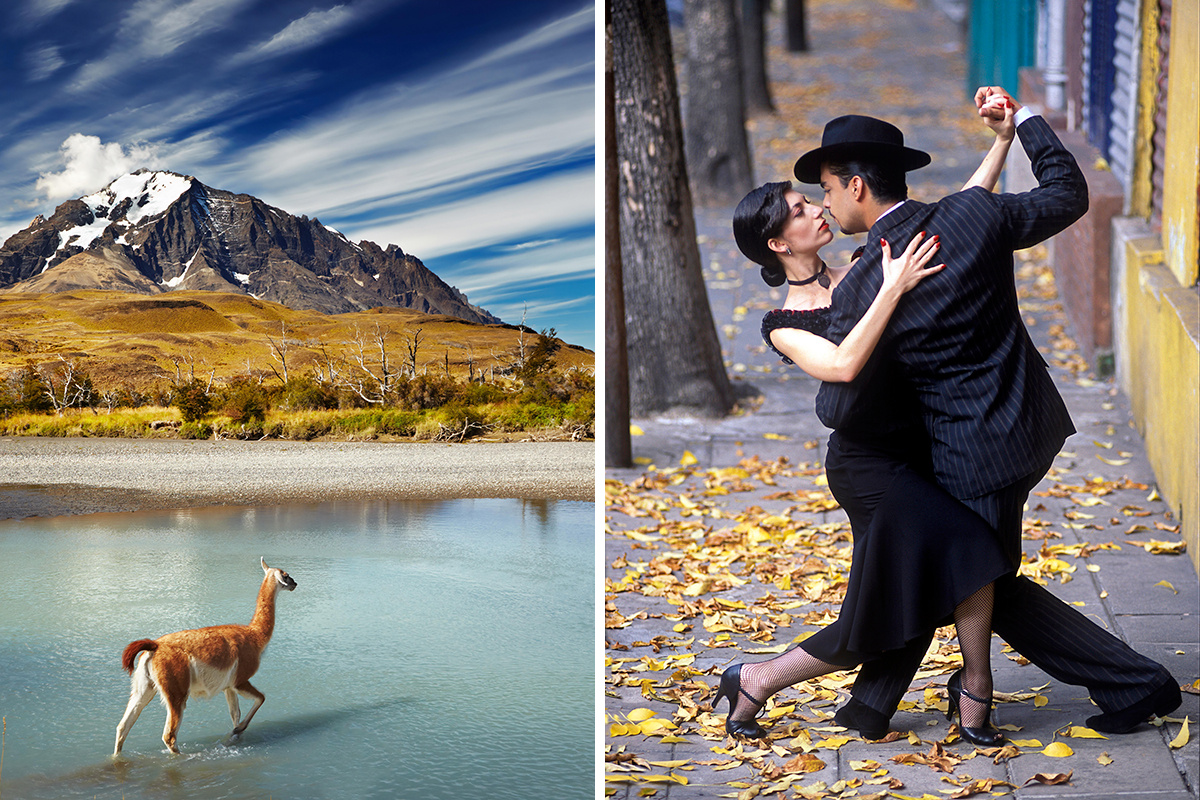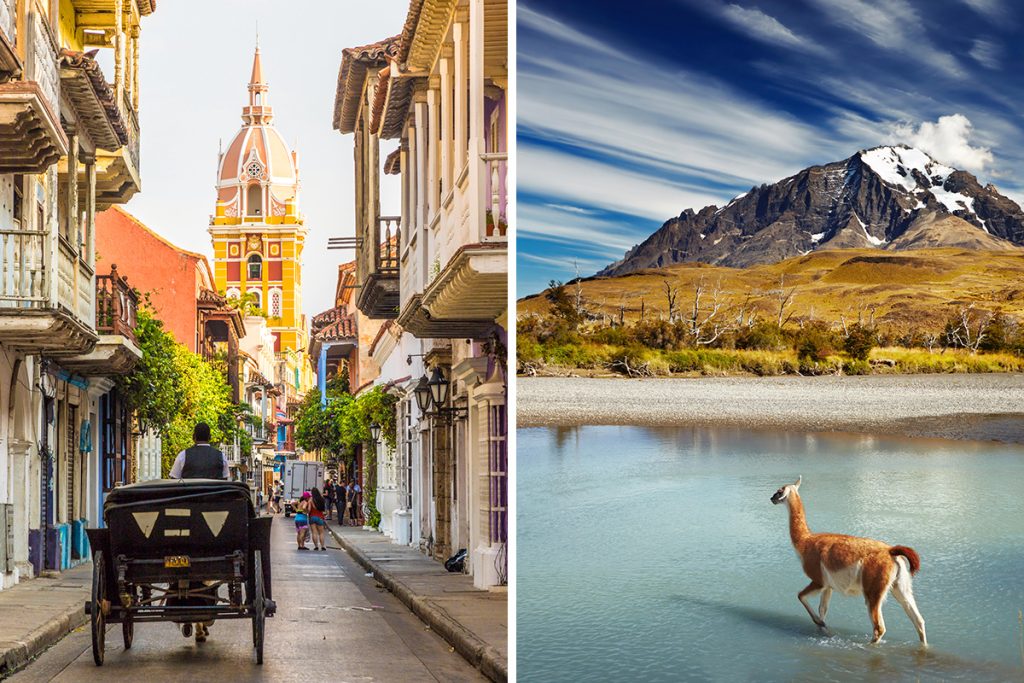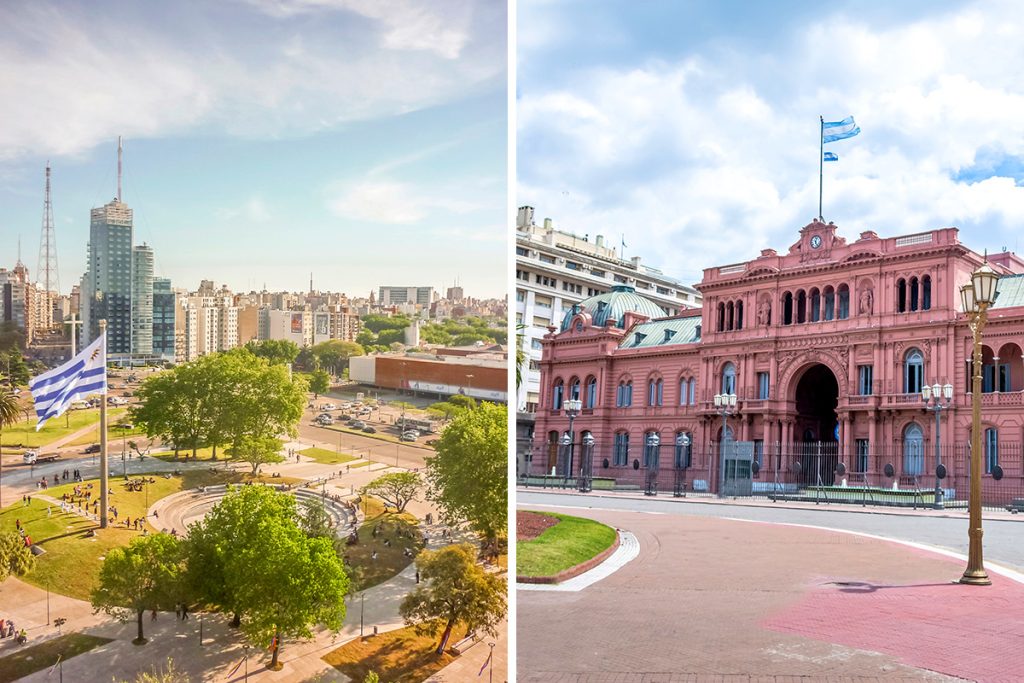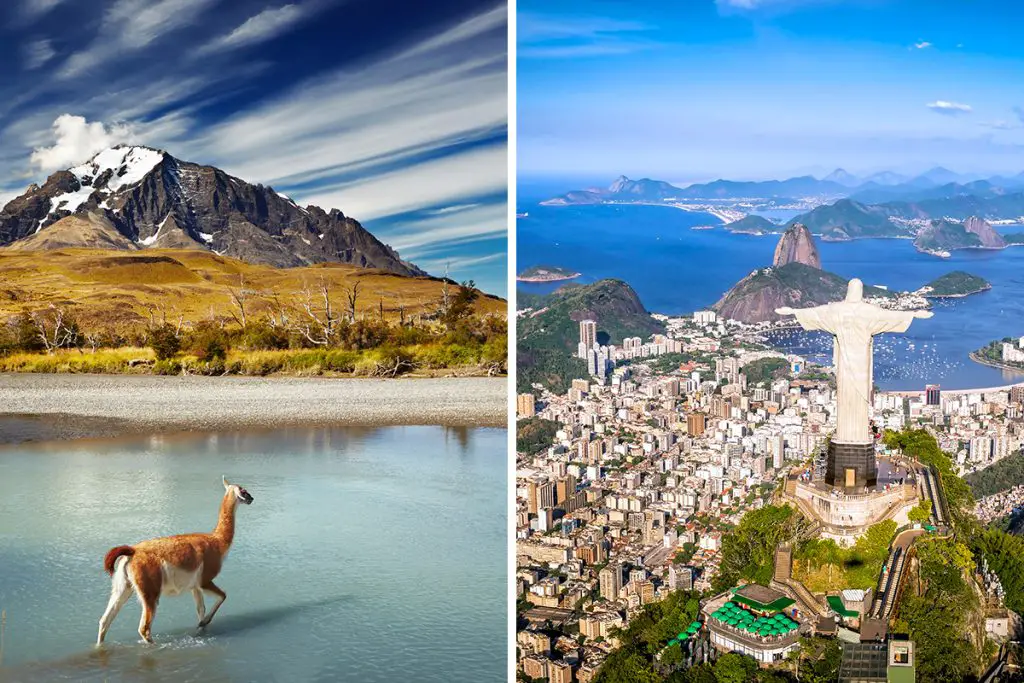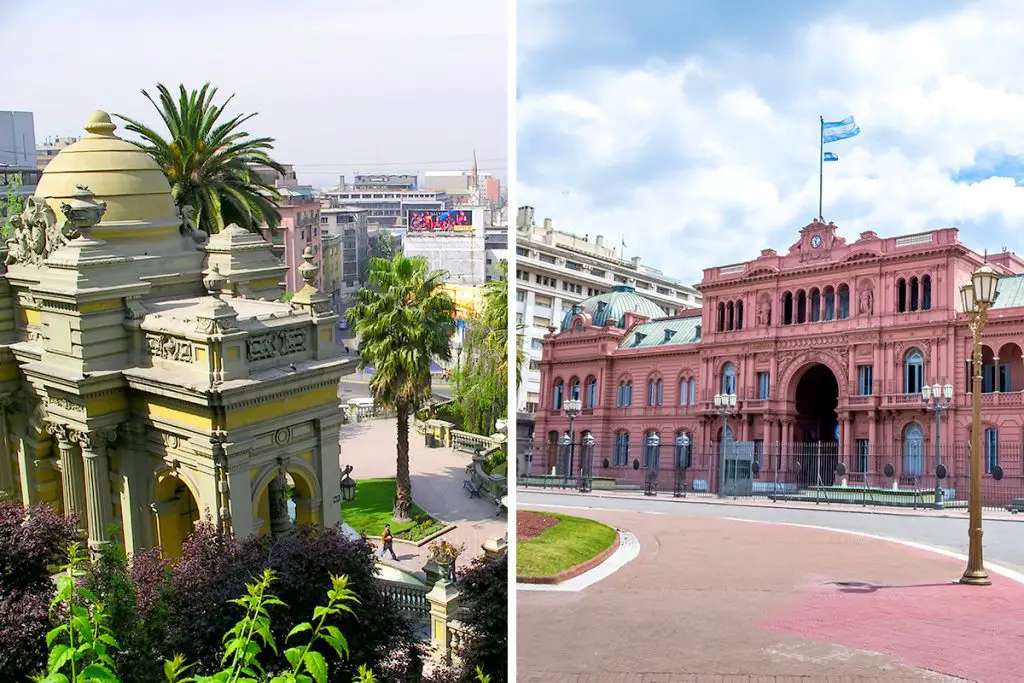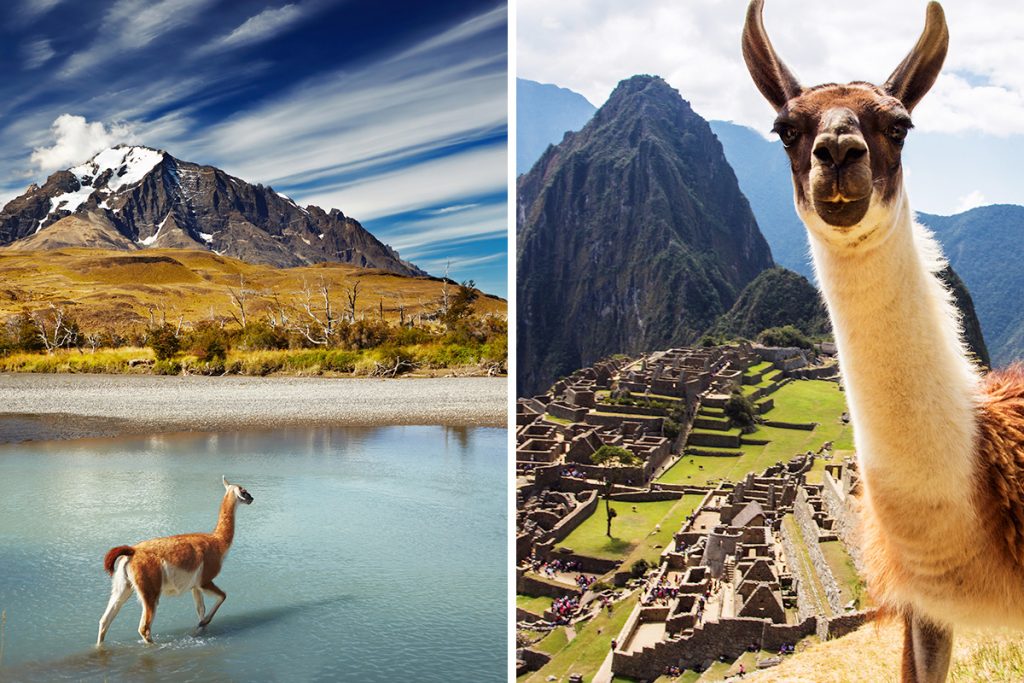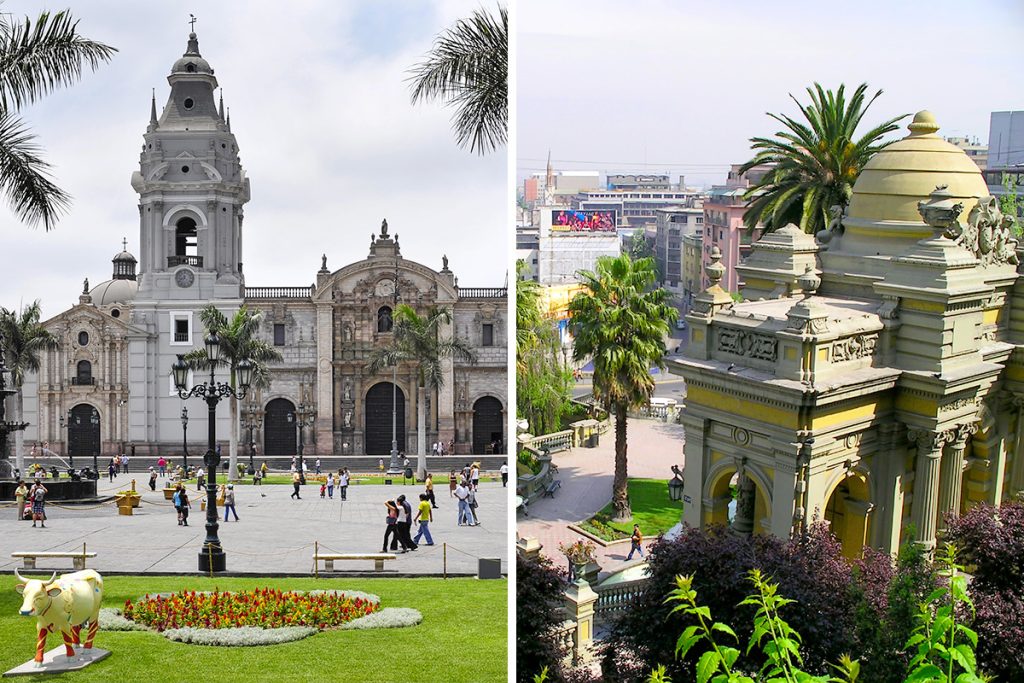In this in-depth comparison, we’ll help you uncover the unique aspects of Chile and Argentina. From history and culture to family-friendliness and cost, we’ll guide you through the best of both destinations. Ready to discover which country is the ideal match for your next adventure? Keep reading to find out!
History & Culture
Diving into the history and culture of Chile and Argentina is like opening a treasure chest of fascinating stories. Both countries have rich pasts that shaped their unique cultural identities today.
Chile’s history is marked by the influence of the indigenous Mapuche people and Spanish colonization. Over time, Chile’s culture has become a beautiful blend of these roots, with colorful arts and crafts, traditional music, and lively festivals.
Argentina, on the other hand, has a more European influence in its history and culture. The Spanish, Italian, and German immigrants who arrived in Argentina left a lasting impact. Tango, a dance born in Buenos Aires, is an excellent example of Argentina’s vibrant cultural scene.
In terms of historical sites, Chile has impressive ancient ruins, such as the mysterious Easter Island. Argentina boasts its own share of historical landmarks, like the beautiful architecture in Buenos Aires, reflecting its European past.
Both countries are proud of their literary achievements. Chile’s beloved poet, Pablo Neruda, and Argentina’s revered writer, Jorge Luis Borges, are just two examples of the literary icons hailing from these nations.
In summary, Chile’s history and culture showcase a unique blend of indigenous and Spanish influences, while Argentina’s past reflects a stronger European impact. Both countries have a wealth of historical sites, vibrant cultural scenes, and esteemed literary traditions.
Attractions & Activities
Chile and Argentina both offer a diverse range of attractions and activities that cater to various interests, making it hard to choose between the two.
For nature lovers, Chile is a dream come true. From the arid Atacama Desert in the north to the lush forests of Patagonia in the south, the country’s diverse landscape offers endless opportunities for exploration. Hiking, mountain biking, and stargazing are popular activities in Chile.
Argentina also has breathtaking natural wonders, such as the magnificent Iguazu Falls, shared with Brazil, and the awe-inspiring Perito Moreno Glacier in Patagonia. Hiking, wildlife watching, and wine tasting in Mendoza are just a few of the activities available in Argentina.
City explorers will be delighted by the bustling streets of Santiago, Chile’s capital, where modern skyscrapers coexist with historic sites. Art enthusiasts can visit museums and galleries, while architecture lovers can admire the city’s mix of colonial and contemporary styles.
In Argentina, Buenos Aires is a must-visit city, with its vibrant tango scene, elegant architecture, and thriving arts community. Strolling down the colorful Caminito Street or exploring the historic San Telmo neighborhood are just some of the activities awaiting you in this lively city.
Adventure seekers will find plenty to do in both countries. Chile’s Torres del Paine National Park offers world-class trekking, while Argentina’s Aconcagua, the highest peak in the Southern and Western hemispheres, is a mountaineering challenge for experienced climbers.
To sum up, both Chile and Argentina offer a wide array of attractions and activities for every type of traveler. Whether you’re drawn to Chile’s diverse landscapes or Argentina’s European-influenced cities, there’s something for everyone in these two captivating countries.
Beaches
When it comes to beautiful coastlines, both Chile and Argentina have plenty to offer. Each country has its own unique beach landscapes that will make your vacation unforgettable.
In Chile, the long, narrow country boasts over 4,000 miles (6,437 kilometers) of coastline. With such an extensive shoreline, Chile offers various beach experiences, from the golden sands of Viña del Mar to the wild, rocky shores of Punta de Lobos, a paradise for surfers.
Argentina, on the other hand, has a shorter coastline of about 3,100 miles (4,989 kilometers). The beaches in Argentina are mostly concentrated in the eastern part, with popular destinations like Mar del Plata and Pinamar. These coastal towns are known for their wide, sandy beaches and lively atmosphere during the summer months.
For those seeking a more tranquil beach experience, Chile’s Chiloé Island is home to beautiful, untouched beaches like Cole-Cole, surrounded by lush forests. In Argentina, Cariló is a serene beach town where you can enjoy peaceful walks on the sandy shores.
If you’re an animal lover, Chile’s Chiloé Island is also famous for its Magellanic penguin colonies, while Argentina’s Puerto Madryn offers the chance to spot whales, seals, and other marine life during their migration season.
In conclusion, both Chile and Argentina have stunning beaches that cater to different preferences. From surfing in Chile’s Punta de Lobos to enjoying the lively atmosphere of Argentina’s Mar del Plata, you’ll find the perfect beach experience in either country.
Eating, Drinking & Nightlife
The culinary scenes and nightlife in Chile and Argentina are as diverse as their landscapes, offering visitors a chance to indulge in unique flavors and lively entertainment.
Chilean cuisine showcases a mix of indigenous and Spanish influences. You’ll enjoy dishes like empanadas, pastel de choclo, and cazuela. The country is also famous for its world-class wines, particularly its reds from the Maipo Valley and Casablanca Valley.
In Argentina, the food culture is heavily influenced by European immigrants. The country is renowned for its delicious steaks, grilled to perfection in traditional parrillas. Don’t forget to taste the local Malbec wine, which pairs beautifully with Argentine beef.
When it comes to nightlife, Santiago, Chile’s capital, offers a vibrant scene with diverse bars and clubs. The Bellavista neighborhood is a popular spot for bar-hopping, while the upscale Vitacura area features trendy lounges and cocktail bars.
Buenos Aires, Argentina’s capital, is famous for its electrifying nightlife. The city offers everything from traditional tango shows to bustling nightclubs, with Palermo and San Telmo being two popular nightlife districts.
Both countries are also home to thriving craft beer scenes. In Chile, Valparaíso and Santiago have numerous microbreweries, while Argentina’s Bariloche and Córdoba are hotspots for artisanal beer lovers.
In summary, Chile and Argentina offer a wide range of gastronomic experiences and exciting nightlife options. Whether you’re savoring Chilean empanadas with a glass of red wine or dancing the night away in Buenos Aires, you’re sure to have an unforgettable time.
Shopping
If you’re a shopping enthusiast, both Chile and Argentina have unique retail experiences to offer. From local markets to high-end boutiques, you’ll find the perfect place to shop in either country.
In Chile, Santiago is the shopping hub, with malls like Costanera Center and Parque Arauco offering a mix of international brands and local designers. For a more traditional experience, visit the colorful markets of La Vega Central and Los Dominicos, where you can find local crafts, fresh produce, and souvenirs.
Argentina’s shopping scene is centered around Buenos Aires, known for its fashionable neighborhoods like Palermo and Recoleta. Here, you can browse designer boutiques, antique shops, and trendy concept stores. The city also has large malls, such as Galerías Pacífico and Alto Palermo, where you can shop for both local and international brands.
For unique souvenirs, Chile is famous for its lapis lazuli jewelry and handcrafted textiles, while Argentina offers leather goods, mate gourds, and traditional silver accessories.
Both countries have lively street markets, like Chile’s Feria de Providencia and Argentina’s Feria de San Telmo, where you can find local crafts, vintage items, and delicious street food.
In conclusion, whether you’re looking for high-end shopping or traditional markets, both Chile and Argentina offer a wide range of shopping experiences. From Santiago’s Costanera Center to Buenos Aires’ Palermo district, you’ll find plenty of opportunities to shop till you drop.
Accommodation
When it comes to accommodation, both Chile and Argentina provide a variety of options to suit all budgets and preferences.
Chile has a diverse range of accommodations, from luxury hotels in Santiago and upscale resorts in the Atacama Desert to cozy hostels in Valparaíso and eco-lodges in Patagonia.
In Argentina, you’ll find a wide selection of places to stay, including elegant hotels in Buenos Aires, charming estancias in the Pampas, and boutique accommodations in wine regions like Mendoza.
Both countries offer affordable hostels and guesthouses for budget-conscious travelers. In Chile, you can find comfortable options in popular destinations like San Pedro de Atacama and Pucón, while Argentina has numerous budget-friendly choices in cities like Bariloche and Córdoba.
For those who prefer a more unique experience, both Chile and Argentina have glamping and eco-lodge options in stunning locations like Torres del Paine National Park in Chile and Iguazú National Park in Argentina.
In summary, whether you’re seeking luxury, budget, or unique accommodations, both Chile and Argentina cater to a wide range of travelers. With so many options available, you’ll be sure to find the perfect place to rest your head after a day of exploration.
Family-Friendliness & Children’s Activities
Traveling with your family can be an unforgettable adventure, and both Chile and Argentina offer plenty of family-friendly activities to create lasting memories.
Chile has many activities that kids will love. In Santiago, you can visit interactive museums like the Museo Interactivo Mirador or the KidZania theme park. The coastal city of Valparaíso offers boat tours and funicular rides, while the Atacama Desert is perfect for stargazing and exploring unique landscapes.
Argentina, on the other hand, has a variety of activities to keep children entertained. Buenos Aires boasts many parks, such as the Temaikèn Biopark and the Jardín Japonés, where kids can learn about wildlife and nature. Adventure seekers can visit Bariloche for horseback riding, hiking, and zipline experiences in the Andes.
Both countries offer family-friendly accommodations, with hotels and resorts providing amenities like swimming pools, kids’ clubs, and babysitting services. In Chile, you can find family-friendly options in popular destinations like San Pedro de Atacama and Pucón, while Argentina has numerous choices in cities like Bariloche and Mendoza.
Nature-loving families will enjoy Chile’s Torres del Paine National Park and Argentina’s Iguazú Falls, where they can explore beautiful landscapes, spot wildlife, and enjoy outdoor activities together.
In summary, whether you’re looking for city adventures, outdoor activities, or educational experiences, both Chile and Argentina offer a wide range of family-friendly options to create unforgettable memories with your loved ones.
Getting There & Getting Around
Getting to and exploring both Chile and Argentina can be an exciting part of your journey, with various transportation options available to suit your needs.
To reach Chile, you’ll likely fly into Santiago’s Arturo Merino Benítez International Airport (SCL). From there, you can connect to other cities and regions by domestic flights, buses, or car rentals. To travel to Argentina, most international flights land at Buenos Aires’ Ezeiza International Airport (EZE), with domestic flights, buses, and car rentals available for further exploration.
Once in Chile, you can navigate the country using public transportation like buses and the metro in Santiago, or rent a car for more flexibility. In more remote areas, such as Patagonia and the Atacama Desert, guided tours are often the most practical option.
In Argentina, public transportation is widely available in major cities like Buenos Aires, Córdoba, and Mendoza, with buses and trains connecting various regions. Renting a car is another option, especially for exploring the scenic landscapes of Patagonia or the wine regions around Mendoza.
Both countries also offer long-distance buses, which are a comfortable and affordable way to travel between cities and regions.
In conclusion, getting to and around Chile and Argentina is convenient, with a range of transportation options to suit your preferences. Whether you opt for public transport, car rental, or guided tours, you’ll have the freedom to explore these beautiful countries at your own pace.
Weather
Weather can greatly influence your travel experience. Comparing the climates of Chile and Argentina can help you plan your trip better.
Chile, with its long and narrow geography, experiences a wide range of climates.
In the northern Atacama Desert, you’ll find hot days (85°F/29°C) and cool nights (50°F/10°C), while central Chile enjoys a Mediterranean climate with warm summers (82°F/28°C) and mild winters (50°F/10°C). Southern Chile is known for its colder, wetter weather, especially in Patagonia, where temperatures can drop to 32°F/0°C.
Argentina also has diverse climates, from hot and humid in the north (90°F/32°C) to cold and dry in the south. Buenos Aires has a mild climate with warm summers (84°F/29°C) and cool winters (59°F/15°C). In the Andes, temperatures can be chilly, while the southern Patagonia region experiences cold weather similar to Chile’s Patagonia.
To summarize, both Chile and Argentina have diverse climates, so pack accordingly and consider the time of year when planning your trip. Each region offers unique weather conditions, making these destinations appealing year-round.
Safety
Staying safe is a priority for every traveler. Comparing the safety aspects of Chile and Argentina can help you prepare for your journey.
Both Chile and Argentina are considered relatively safe destinations. However, petty crime, such as pickpocketing and bag-snatching, is present in popular tourist areas in both countries. To minimize risks, be vigilant, keep your belongings secure, and avoid flashing expensive items.
In Chile, natural hazards like earthquakes and volcanic activity may occur. Stay informed and follow local authorities’ advice during your visit. In Argentina, on the other hand, you must stay informed about the local news and avoid large gatherings in urban areas.
Chile and Argentina have good healthcare systems, but it’s essential to have travel insurance and take necessary precautions, like getting recommended vaccinations before your trip.
In conclusion, both Chile and Argentina are generally safe destinations, but it’s essential to stay informed, be aware of your surroundings, and take common-sense precautions. With the right preparation, you can enjoy your journey to these beautiful countries with peace of mind.
Cost
Budgeting for your trip is crucial, and comparing the costs of Chile and Argentina can help you make an informed decision.
In Chile, the cost of living is generally higher than in Argentina. A meal at a mid-range restaurant in Chile might cost around CLP 10,000 ($13), while in Argentina, the same meal could cost ARS 800 ($8). Transportation costs are also different: a one-way local bus ticket in Chile is about CLP 700 ($1), while in Argentina, it’s approximately ARS 60 ($0.6).
Accommodation prices vary in both countries, with Chile being slightly more expensive. A budget hotel room in Chile costs around CLP 30,000 ($40), while in Argentina, you can find a similar room for ARS 2,500 ($25).
Tourist attractions and activities can also affect your budget. In Chile, entry fees to popular sites like Torres del Paine National Park are about CLP 21,000 ($28). In Argentina, Iguazu Falls’ entrance fee is around ARS 1,500 ($15).
When it comes to shopping, Argentina generally offers better deals on items like leather goods and wine. However, Chile has its share of unique souvenirs and local products at competitive prices.
In summary, Chile tends to be more expensive than Argentina, but both destinations offer a variety of budget options. Careful planning and research can help you make the most of your budget in either country.
Which Is Better – Chile or Argentina?
Deciding between Chile and Argentina can be a challenge, as both countries offer incredible experiences. Let’s summarize each aspect to help you make the right choice.
When it comes to history and culture, both countries have rich and diverse backgrounds. Choose Chile for its indigenous heritage and archaeological sites, or Argentina for its European-influenced architecture and vibrant tango scene.
In terms of attractions and activities, Chile offers diverse landscapes, from deserts to glaciers, while Argentina has a mix of urban and natural experiences, such as Buenos Aires’ bustling city life and Iguazu Falls.
For beach lovers, Chile provides a vast coastline with various types of beaches, while Argentina has the added benefit of warm, tropical beaches in its northeastern region.
Food, drink, and nightlife experiences differ between the two countries. Chilean cuisine is seafood-focused, and the country is known for its wine, while Argentina is famous for its beef and lively nightlife.
Shopping opportunities are abundant in both countries, but Argentina generally offers better deals on items like leather goods and wine, whereas Chile has unique souvenirs and local products.
Regarding accommodations, both countries have various options for all budgets, but Chile is generally slightly more expensive.
Family-friendliness and children’s activities are plentiful in both destinations, with numerous attractions and activities catering to younger travelers.
Getting to and around each country is relatively easy, with well-connected transportation networks. However, Chile’s long and narrow geography might require more travel time between destinations.
Weather-wise, Chile offers a wide range of climates due to its geography, while Argentina has more consistent weather patterns.
Safety concerns are similar for both countries, with petty crime being the most common issue. Taking basic precautions will help ensure a safe trip in either destination.
Cost-wise, Argentina tends to be more budget-friendly, while Chile can be more expensive overall.
In conclusion, the choice between Chile and Argentina will depend on your personal preferences, budget, and desired experiences. Both countries have so much to offer that you may want to visit both if time and budget permit. No matter which destination you choose, you’re sure to have an unforgettable journey filled with unique experiences and lasting memories.

